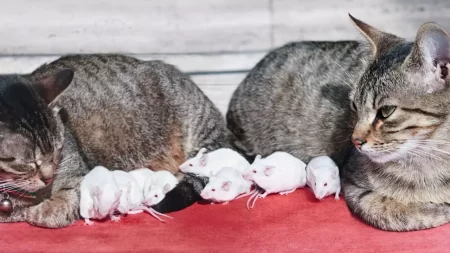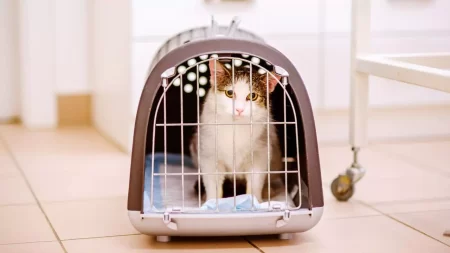Yes, Cats use their senses to distinguish between male and female humans.
Their sense of smell allows them to detect different hormone levels, while their sight helps them identify body shape, head size, and facial features.
When it comes to hearing, cats can distinguish pitch, tone, and rhythm in human speech.
Moreover, cats can recognize individual humans by associating them with specific physical cues.
Even if they encounter unfamiliar humans, cats can often discern between male and female individuals.
Can cats distinguish between male and female voices?
Yes, cats can distinguish between male and female voices.
They do this by detecting variations in voice pitch, with males typically having a lower pitch than females.
Cats can also perceive differences in speech tone and rhythm between the genders.
A research paper published in Animal Cognition unveiled that felines could correctly recognize a speaker’s gender with an accuracy rate of 72%.
Notably, cats performed better at gender identification when they were already familiar with the speaker’s voice.
These findings imply that cats are capable of memorizing individual voices and applying this knowledge to differentiate between male and female voices.
Do cats treat male and female humans differently?
Research hints at differential behavior in cats towards male and female humans. One study in Behavioral Processes observed a tendency in cats to display more affectionate behaviors such as rubbing against and purring more towards female owners compared to male owners.
Moreover, the frequency of grooming was higher for female owners.
A separate study featured in Applied Animal Behaviour Science discovered that cats showed a preference for interacting with female strangers over male strangers.
The cats were more prone to display friendliness and playfulness with unfamiliar females rather than males.
These studies imply a possible predilection of cats towards trust and affection with females over males.
Despite this, it is crucial to acknowledge that these studies were limited in scale and extensive research is necessary to validate these conclusions.
Furthermore, the uniqueness of each cat’s personality is significant. Affection towards humans can vary with some cats leaning more towards males while others prefer females.
Spending quality time and getting to know your cat personally is the optimal method to understand their behavior.
Can cats recognize the scent of male and female humans?
Yes, cats can recognize the scent of male and female humans.
With about 200 million olfactory receptors in their noses compared to our 5 million, cats can detect scents that are imperceptible to us.
This acute sense allows cats to detect the hormonal differences between male and female humans, as well as distinguish between people based on the unique chemicals our bodies produce, such as sweat and pheromones.
Through smelling others, cats can learn about the people around them, forming a memory of the person and determining if they are a friend or a foe.
Can cats differentiate between the emotional states of male and female humans?
Yes, cats can differentiate between the emotional states of male and female humans.
This is accomplished through various cues, including the interpretation of body language, voice, and scent. In particular, cats possess the capability to interpret human body language and use this as a basis to determine how an individual feels.
For example, when an individual frowns, cats may perceive this as a signal of anger, which could cause them to steer clear of that individual.
Additionally, cats can hear the tonality of our voice, and utilize this to identify the emotional state of a person. When an individual speaks in a high-pitched voice, cats may consider this as an indication of happiness and may move toward that person.
Furthermore, cats have a keen sense of smell, allowing them to detect fluctuations in human body chemistry. For instance, when we undergo stress, our body releases hormones that could be detected by cats.
What impact does a person’s age have on a cat’s ability to distinguish between male and female humans?
Research indicates cats can discern a speaker’s sex more effectively when the speaker is an adult rather than a child.
The authors of this study attribute this to the distinctive secondary sex traits in adults like a deeper voice or more body hair, which may aid cats in differentiating between male and female humans.
Adults, often having more interactions with cats, might have an edge in being identified by them.
Yet, it’s crucial to underscore that these results stem from a single study, warranting further investigation for confirmation.
Equally vital to remember is the individuality of each cat, making their capacity to differentiate between male and female humans subject to variation.







